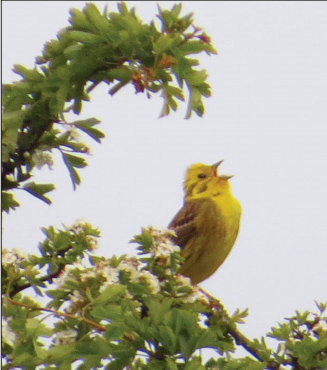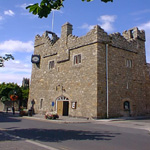| July
/ 2019 - Michael Ryan
|
 Bradgate Park with some of its 800 deer herd Image: M. Ryan |
|
Extending
our break after attending a wedding in Leicestershire in the Midlands
of England we got to see some of the local area. Leicestershire itself has idyllic picturesque farmland with softly rolling hills and dales, neat cereal fields, old solitary oaks and hedgerows overflowing with Hawthorn and Elder flowers. With lots of well-established woods comprising mostly native broadleaved trees in the county there are also some sizeable estates and parks one of which, Bradgate Park, is a former deer park of 830 acres with a current herd of around 550 animals, mostly Fallow but also some Red deer. There was in abundance all around the park many Yellowhammers. In Ireland these lovely bright yellow birds are usually found around cereal fields, usually in the east of the country and more common in the horticultural areas north of county Dublin and parts of Wicklow and Wexford but in Bradgate they were singing from rocks in heath land, from walls and from conifer trees, delightful numbers of them singing the song which is often described as sounding like ‘A little bit of bread and no cheese’. A Cuckoo called, we saw Stonechats and Reed Bunting while Skylarks piped out their wondrous cascade of notes from above us. |
 Yellowhammer singing from Hawthorn in Bradgate Park Image: M. Ryan |
 Ancient hollow Oak at Bradgate Park Image: M. Ryan |
|
Bradgate
Park was the family home of Lady Jane Grey, one of Henry VIII’s
illfated wives. the redbrick ruins of the substantial house still
stand and niches and alcoves in the walls provide a home for a historically
dramatic plant, Belladonna or Deadly Nightshade, known for its reputation
as a deadly poison. Much more benign are the spectacular ancient oak
trees which grow throughout the park. |
DALKEY HOME PAGE | DALKEY COMMUNITY COUNCIL | DALKEY HERITAGE COMPANY | CANNONAID


